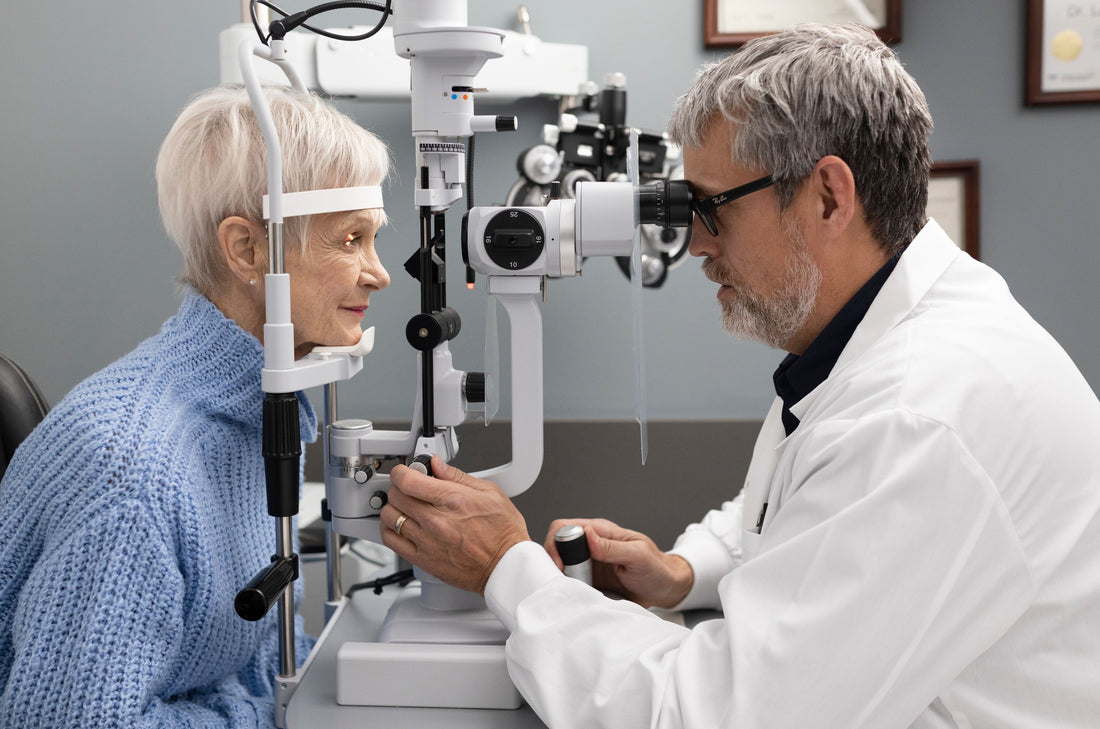Potential new problems and issues can appear at all ages. That's why it's important to get regular eye exams and to know what to expect as you grow older.
Vision issues we deal with regularly include:
Vision Over 40 At this age, potentially serious eye conditions can appear as your vision begins to deteriorate. Unfortunately, symptoms often have no pain or noticeable effects until it's too late, eventually resulting in a loss of vision and even blindness. That's why it's important to schedule regular eye exams.
Vision Over 60 As we grow older, the risks of serious eye problems can increase dramatically. These vision issues can have a major impact on the quality of life, particularly for patients over the age of 60, who are more susceptible to conditions such as glaucoma and cataracts. With regular eye exams, many eye conditions for patients 60 years of age and older can be detected and treated early on.
Pediatric Vision
Doctors of Optometry Canada recommends that children as young as six-months of age get an eye exam at least once a year to ensure their eyes are healthy. Pediatric vision exams are particularly important as children develop, with studies indicating that almost 25% of school-age children have vision problems—often without their parents realizing. Studies also showing a direct link between poor grades in school and uncorrected vision issues.
Myopia
Myopia (also known as nearsightedness) is one of the most common vision issues among Canadians. You see objects best close up, but have trouble viewing objects in the distance. Symptoms of uncorrected myopia can also include squinting, eyestrain and headaches.
Myopia is caused when the eyeball is too long or because your cornea or lens has a slight curve, throwing off the focusing power of your eyes and causing light to hit at a point in front of the retina, rather than directly on the surface of the retina.
In most cases, myopia starts in childhood.
You may be more likely to develop the condition if one or both of your parents had it. It may worsen as you age, but in general the condition stabilizes as an adult.
Myopia is easily detected and can be treated with either contact lenses or eyeglasses.
Hyperopia
Hyperopia (also known as farsightedness) is a common, easily treatable vision issue. If you have hyperopia that means you have trouble viewing objects up close. Symptoms of uncorrected hyperopia can also include squinting, eyestrain and headaches.
Hyperopia is caused when your eyeball is either too short or your cornea doesn't have the proper curve. Light entering your eye is not focused correctly, resulting in images that appear blurry when viewed up close.
In the majority of cases, hyperopia starts in early childhood. You're more likely to develop the condition if one or both of your parents also have it. It may worsen as you age, but in general the condition stabilizes as an adult. Hyperopia is easily detected and can be treated with reading glasses and contact lenses.
Astigmatism
Astigmatism is a common and relatively easy to treat vision condition that causes your vision to be blurred and unfocused when looking at objects both up close and far away. Your cornea or lens is irregularly shaped, preventing light from focusing properly on your retina (the part of your eye that transmits visual imagery to your brain).
Astigmatism often occurs in individuals who have other vision conditions such as myopia (nearsightedness) and hyperopia (farsightedness). Together, these three vision conditions are often referred to as "refractive errors" because they affect how your eyes bend or "refract" the light they come into contact with.
While the specific causes of astigmatism are unknown, research suggests it's most likely hereditary and something that's present from birth. In fact, most people have some degree of astigmatism, but it's when the condition causes objects to become unfocused or results in discomfort and headaches that it needs to be treated.
Astigmatism is easily detected and treated with eyeglasses and contact lenses. We offer a wide range of lenses and contacts that can correct astigmatism. In most cases, we can even offer Internal Freeform lenses that are custom made for your for a sharper and more focused vision than traditional lenses.
Presbyopia
Presbyopia is a common vision condition in which the lens of your eye loses its flexibility, making it difficult for you to focus on objects up close. While, for many patients, presbyopia seems to appear all of a sudden, in fact the loss of lens flexibility occurs over a number of years and usually becomes noticeable in your mid-40s as a natural part of the aging process.
Presbyopia can also complicate other common vision conditions such as nearsightedness, farsightedness and astigmatism. If you've noticed that your vision has become blurry when reading or that you've started to experience headaches and eye fatigue while looking at objects up close, those could be warning signs of presbyopia.
Presbyopia is fairly easy to detect and can be treated with glasses, bifocals, trifocals and contact lenses. You may only need to wear your glasses for reading or working on the computer, but you may find that wearing them all the time is more convenient and helps you see more clearly.



